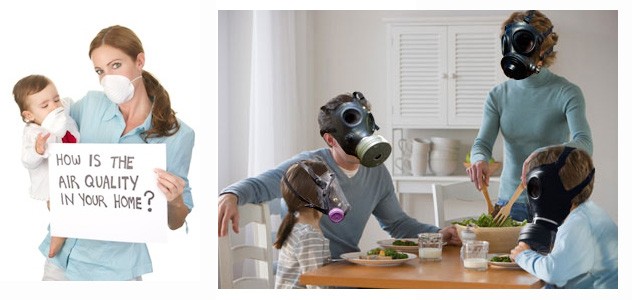Easy Steps To Remove Indoor Air Pollution Sources And Live A Perfect Indoor Life
Indoor air pollution sources have been rising up since the usage of chemical products began spreading like wildfire after world war 2.
Indoor air quality refers to the quality of air within the buildings and structures where you live.
Understanding how to control common pollutants may help reduce your risk of immediate and long-term health effects.
The American Lung Association maintains a list of common pollutants with a negative effect on your health.
This includes building and paint products, carpets, formaldehyde, radon and volatile organic compounds (VOCs).
Indoor air pollution is one of the world’s largest environmental problems. According to the State of Global Air 2019 report, indoor air pollution could, on average, shorten the life of a person born in 2019 by 20 months.
It may be responsible for more deaths than many other risk factors. Such as malnutrition, physical inactivity and excessive alcohol use.
Long-Term Exposure Contributes To Nearly 5 Million Deaths Related To Stroke, Heart Attack And Many Other Chronic Diseases
The State of Global Air report 2019 suggests China’s efforts to fight air pollution are showing the first signs of progress. Even as South Asia continues to lead the world as the most polluted region.
Unfortunately, air pollutants may be 100 times more concentrated inside than they are outside.
As you are dependent on the quality of the air you breathe to support your respiratory system and overall health. Paying attention to your indoor air quality is one step in helping you maintain optimal health.
According to the Environmental Protection Agency (EPA), poor indoor air quality is one of the top public health risks you face each day.
Understanding and controlling indoor air pollution by making small changes to your living space may help reduce your overall health risks.
Plants Don’t Have A Large Impact On Indoor Air Quality
 While past research has demonstrated indoor plants help to filter some pollutants from indoor air, including an often-quoted study from NASA, other research suggests that while plants offer other health benefits, they may not be as effective at cleaning the air as was once thought.
While past research has demonstrated indoor plants help to filter some pollutants from indoor air, including an often-quoted study from NASA, other research suggests that while plants offer other health benefits, they may not be as effective at cleaning the air as was once thought.
Luz Claudio, researcher and tenured professor at the Icahn School of Medicine at Mount Sinai in New York, reviewed much of the current and past research finding.
There was no question plants were capable of removing VOCs and toxins from the air under laboratory conditions.
However, In The Real World, Incorporating A Few Plants May Not Purify The Air And There Isn’t Much Hard Science To Back It Up
Most of the studies used indoor plants in sealed environments. But did not extend the studies to functional ways in which they might be used in the home.
Stanley Kays, Professor Emeritus of horticulture at the University of Georgia co-wrote a study on the ability of 28 ornamental plants.
These plants were commonly used for interior plantings to remove volatile indoor pollutants, including benzene and toluene.
The plants were purchased from commercial sources, the roots washed and the plants re-potted.
Testing was done under laboratory conditions in which the plants were placed in gas-tight glass jars and the gases introduced.
Of the 28 species tested, four had superior removal efficiencies for each of the tested compounds. Those plants were:
- Hemigraphis alternata (red-flame ivy or waffle plant)
- Hedera helix (English ivy or European ivy)
- Hoya carnosa (porcelain flower or wax plant)
- Asparagus densiflorus (asparagus fern or foxtail fern)
Indoor Air May Be More Polluted Than Outdoor Air

The Clean Air Act amendment was passed in 1990 and is the legal authority regarding air pollution control. The legislation modified current legal authority provided by an earlier Clean Air Act in 1963 and 1970.
The amendment also addressed acid rain and toxic pollutants affecting the ozone layer. To be compliant, massive decreases in gas emissions were mandated.
And three major chemical contributors to the depletion of the ozone layer were phased out of use.
The New Yorker reports that since the 1970s, emissions of many gases have fallen by 50% and particulate counts by 80%.
While This Is A Significant Victory, The Reality Is Most Americans Spend 90% Of Their Lives Indoors
Unfortunately, those who are more susceptible to the adverse effects of air pollution, such as the elderly. Those with cardiovascular or respiratory diseases or the young, will tend to spend even more time inside.
In recent decades, energy-efficient building construction has reduced mechanical ventilation. And also adequate air exchange, increasing the concentration of gases that may be found in buildings.
Additionally, builders are increasing their use of synthetic materials. And homeowners are furnishing their home with carpeting, personal care products and materials that off-gas toxic fumes.
Household cleaners, paint and glue products and even your electronic devices all contribute to poor indoor air quality.
Less frequently, outdoor air pollutants may enter a building and contribute to poor air quality, such as harmful smoke from chimneys and volatile compounds from combustion engines.
However, unlike outdoor air, indoor air quality is largely unregulated.
Cooking And Cleaning Impacts Your Indoor Air Quality

It wasn’t until after 9/11 that indoor air research attracted funding. One program began supporting research into HVAC filtration systems in an effort to detect traces of biological weapons.
Biochemist Paula Olsiewski understood a complete lack of knowledge of baseline conditions inside a building would place first responders and others in a difficult position if they were unable to detect biological threat.
With so few specialists in the area, she developed a team of 20 research groups from 13 universities. Then she launched HOMEChem (House Observations of Microbial and Environmental Chemistry).
The HOMEChem experiment took place in June 2018, during which the researchers attempted to identify the most crucial aspects of pollutants controlling the indoor environment.
The test house was a 1,200 square-foot prefab home that had been on the University of Texas campus since 2006.
The scientists devised a schedule to mimic real-life activities, including cleaning, cooking and simply hanging out.
These became a series of controlled experiments during which they used state-of-the-art instruments to measure air quality.
Early in the experiment they found the instruments, which had been designed for outdoor measurements, had to be re-calibrated to measure the higher concentrations building up inside.
Indoor Air Pollution Sources: The Data Revealed Cooking, Cleaning And Simply Existing Created Emissions Within The Home
Researchers are now struggling with the question of how outdoor air pollution, long linked to negative health effects, may decrease life quality and expectancy when the majority of people do not spend much time outside.
Several theories have been put forward and researchers are continuing to evaluate data and design studies to hopefully identify these links.
Katharine Hammond, an exposure scientist at UC Berkeley School of Public Health, commented on the results of the study, “The point of an experiment like this is that you start raising questions and figuring out how to go further into the detail.”
Health Challenges Associated With Indoor Air Pollution Sources

The impact of indoor air pollution is significant and may not yet be fully appreciated.
Researchers are finding you don’t have to be sick to experience the impact from polluted air, including short-term respiratory irritation or breathing difficulties.
The adverse effects on your health will depend on the type of pollutant, concentration and the length of your exposure.
During high air pollution days, whether indoors or out, you may experience aggravation of any current cardiovascular or respiratory illness and an added stress to your heart and lungs.
Long-term exposure to polluted air may permanently accelerate aging in your lungs and reduce your lung capacity, as well as exacerbate or trigger the development of illnesses such as asthma, emphysema and bronchitis.
Those Who Are Most Susceptible Have A Past Medical History…
…that includes heart diseases, asthma, emphysema or obstructive pulmonary disease.
Pregnant women, older adults and children under 14 are also at higher risk. In 2013, the World Health Organization classified outdoor air pollution as carcinogenic to humans.
As researchers learn more, can the classification of indoor pollution be far behind?
The Environmental Defense Fund reports air pollution is responsible for 6.4 million deaths each year, of which 600,000 are children.
Evidence also suggests air pollution is associated with an increased risk of dementia, diabetes and autism.
Indoor Air Pollution Sources: Health Advantages To Keeping Plants
 Although the benefits of reducing indoor air pollution may be less significant than previously thought, keeping plants indoors does have other benefits.
Although the benefits of reducing indoor air pollution may be less significant than previously thought, keeping plants indoors does have other benefits.
You don’t need to be a psychologist to understand living plants look attractive. However, you’ll enjoy even more by having plants in your home.
According to a study published in the Journal of Physiological Anthropology, having active interaction with plants, such as smelling or touching them, may reduce psychological and physiological stress.
While a walk in the park will accomplish the same thing, most spend a great deal of time indoors, so adding house plants may be beneficial.
Plants also act as a natural humidifier as they release moisture through their leaves.
However, if you have children or pets, be sure the plants you bring home are safe.
In one study, researchers found potted plants and flowers in your immediate work space may substantially improve your creativity and problem-solving skills and would improve concentration and boosted feelings of well-being by 47% at work.
Interaction with greenery and nature may also have a positive effect on your cardiovascular system. Also on your blood pressure, increase attentiveness, productivity, and raise job satisfaction.
Tips To Reduce Your Indoor Air Pollution Sources
While the number of potential indoor pollutants is large, there are several things you can do to reduce the air pollution in your home and reduce your health risks.
Indoor Air Pollution Sources Tip 1: Open the windows —One of the simplest and easiest ways to reduce the pollution count in your home is to open the windows and let a little fresh air in. Because most homes have little air leakage, opening your windows for as little as 15 minutes every day may improve the quality of the air you’re breathing. Installing an attic fan is another way of bringing fresh air into the home and reducing your air conditioning costs. Install kitchen and bathroom fans that vent to the outside to remove contaminants from these rooms. |
Indoor Air Pollution Sources Tip 2: Consider a heat recovery ventilator (HRV) —Since most newer homes are air-tight and therefore more energy efficient, air exchange with outdoor air is challenging. Some builders are now installing HRV systems to help prevent condensation and mould growth and improve indoor air quality. If you can’t afford an HRV, open your windows and run the bathroom and kitchen exhaust fans to vent your indoor air to the outside. You don’t have to do this for more than 15 to 20 minutes each day. And should do it summer and winter at times when the temperature outside is closest to your indoor temperature. You might lose a little in electricity, but the improvement to your health is worth it. |
Indoor Air Pollution Sources Tip 3: Service fuel-burning appliances —Poorly maintained natural gas heaters and stoves, furnaces, hot water heaters, space heaters, water softeners and other fuel-burning appliances may leak carbon monoxide and nitrogen dioxide. |
Indoor Air Pollution Sources Tip 4: Keep indoor humidity below 50% —Mould grows in damp and humid environments. Use a dehumidifier and air conditioner to keep your humidity under 50%. Keep the units cleaned so they aren’t a source of pollution. |
Indoor Air Pollution Sources Tip 5: Don’t smoke indoors —Ask smokers to go outside. Second hand smoke from cigarettes, pipes and cigars contains over 200 known carcinogenic chemicals, endangering your health. |
Indoor Air Pollution Sources Tip 6: Don’t use scented candles, room fresheners or hazardous cleaning supplies —Candles and air fresheners release dangerous VOCs into your home. Instead, remove all garbage from your home as often as necessary and keep soiled laundry away from the living areas. Clean with less hazardous supplies, such as white vinegar and baking soda, and add essential oils for a clean scent. |
Indoor Air Pollution Sources Tip 7: Test for radon —Radon is a colourless, odourless gas linked to lung cancer. It can be trapped under your home during construction and may leak into your air system over time. Radon testing kits are a quick and cheap way to determine if you are at risk. |
Indoor Air Pollution Sources Tip 8: Clean air ducts and change filters —The air ducts from your forced air heating and air conditioning units may be a source of pollution in your home. If there is mould growth, a buildup of dust and debris or if the ducts have become home to vermin, it’s time to call a professional and have them cleaned. Change your furnace filters every three months or earlier if they appear to be dirty. |